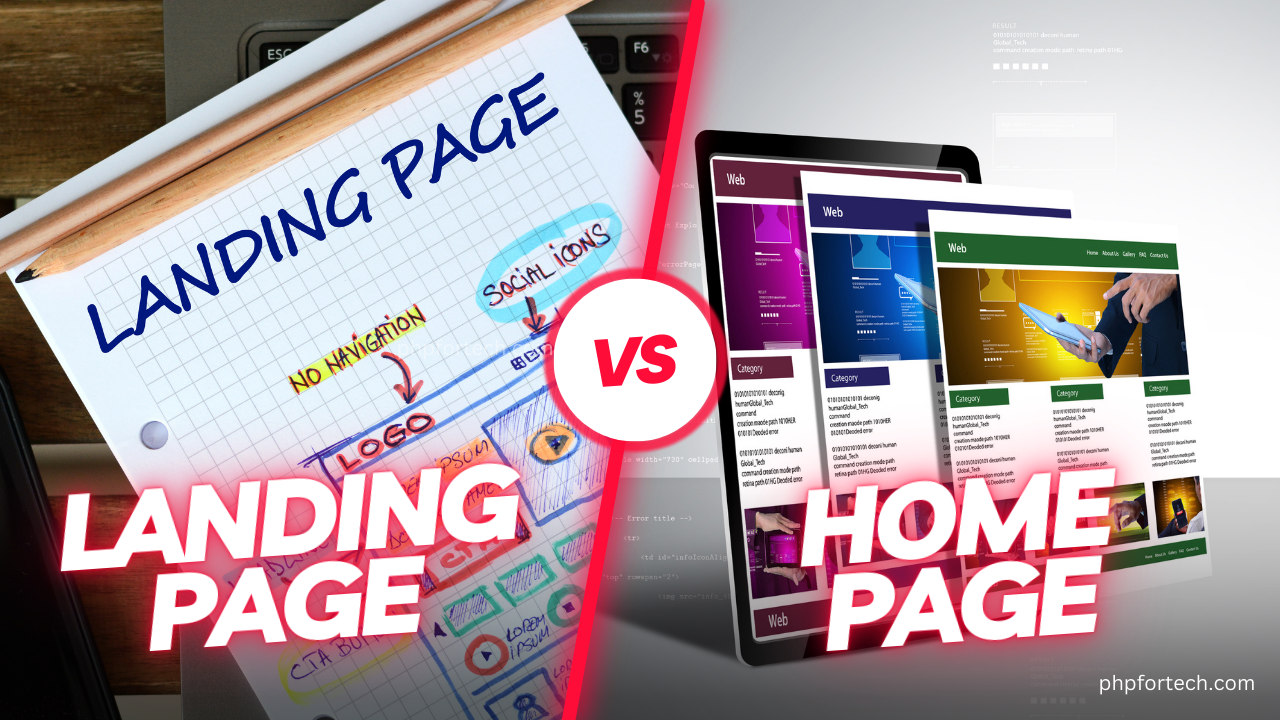What is the key function of a landing page versus a home page?
In the digital marketing world, understanding the difference between a landing page and a home page is essential for businesses looking to improve their online presence. While both serve important roles, they have distinct functions that impact user experience, conversions, and SEO.
In this blog, we will explore the key functions of a landing page and a home page, their differences, and when to use each one effectively.
What is a Landing Page?
A landing page is a standalone web page designed specifically for a marketing campaign. It is created with a single goal in mind—to convert visitors into leads or customers. These pages are often used in paid ad campaigns, email marketing, and social media promotions.
Key Functions of a Landing Page
- Focus on Conversions
- A landing page eliminates distractions, guiding visitors toward taking a specific action like signing up, purchasing, or downloading.
- Minimal Navigation
- Unlike a home page, a landing page usually lacks a menu bar to prevent users from leaving before converting.
- Targeted Messaging
- Each landing page is designed for a specific audience and campaign, ensuring high relevance.
- Lead Generation
- Many landing pages include forms to capture user details, such as name and email, in exchange for valuable content or offers.
- A/B Testing for Optimization
- Marketers often run A/B tests on landing pages to determine which headlines, CTAs, or images drive the highest conversions.
What is a Home Page?
A home page is the main entry point of a website, serving as a hub for visitors to explore different sections. It provides an overview of the brand, products, services, and navigation options.
Key Functions of a Home Page
- Brand Representation
- The home page showcases a company’s identity, values, and mission to create a strong first impression.
- Website Navigation
- Unlike landing pages, home pages contain menus, links, and sections guiding visitors to different pages.
- Informational & Engagement-Oriented
- A home page provides various details about the business, services, testimonials, and contact information.
- SEO & Organic Traffic Growth
- A well-optimized home page helps rank for branded keywords and drive organic traffic from search engines.
- Multiple CTAs for Different Users
- A home page includes various calls-to-action (CTAs) for different user intents—such as exploring products, signing up, or contacting the company.
Key Differences Between a Landing Page and a Home Page
| Feature | Landing Page | Home Page |
| Purpose | Designed for conversions | Acts as the main hub of the website |
| Navigation | Minimal or none | Includes full navigation menu |
| Content Focus | Specific to one campaign or offer | Broad information about the brand |
| SEO Role | Optimized for PPC & conversions | Optimized for organic search |
| User Intent | Encourages a single action (e.g., signup, purchase) | Guides users to explore the website |
| Traffic Source | Mostly from paid ads, social media, or email campaigns | Mostly from organic search and direct visits |
When Should You Use a Landing Page vs. a Home Page?
Use a Landing Page When:
- Running paid ad campaigns (Google Ads, Facebook Ads, etc.)
- Promoting a specific product, service, or offer
- Generating leads through forms or sign-ups
- Testing different marketing strategies through A/B testing
Use a Home Page When:
- Providing an overview of your business
- Improving brand awareness and SEO rankings
- Giving users multiple navigation options
- Encouraging long-term engagement
How Landing Pages and Home Pages Impact SEO & User Experience
SEO Impact
- Home pages help build domain authority and rank for branded keywords.
- Landing pages are optimized for specific, high-converting keywords but may not rank organically as well as home pages.
User Experience
- A well-structured home page improves user engagement by offering multiple pathways.
- A landing page provides a seamless experience for users looking for a specific action without distractions.
Best Practices for Designing a Landing Page and a Home Page
Landing Page Best Practices:
- Keep the content clear, concise, and action-driven.
- Use a compelling CTA (Call-to-Action).
- Remove unnecessary links to avoid distractions.
- Optimize for mobile responsiveness and fast loading speed.
- Use trust signals like testimonials, reviews, and security badges.
Home Page Best Practices:
- Design a visually appealing and user-friendly layout.
- Provide easy navigation for users to find important pages.
- Optimize for SEO with relevant keywords and meta descriptions.
- Include strong branding elements like a logo and company message.
- Add social proof, testimonials, and key highlights of your offerings.
Conclusion
Both landing pages and home pages serve important roles in a website’s success. A landing page is designed for focused, high-converting actions, while a home page acts as the central hub for brand awareness and exploration. Understanding their differences helps businesses create a more effective online strategy.
If you want to boost conversions, improve SEO, and enhance user experience, use both pages strategically based on your goals.
🚀 Need help with website design or landing page optimization? Contact us today!
